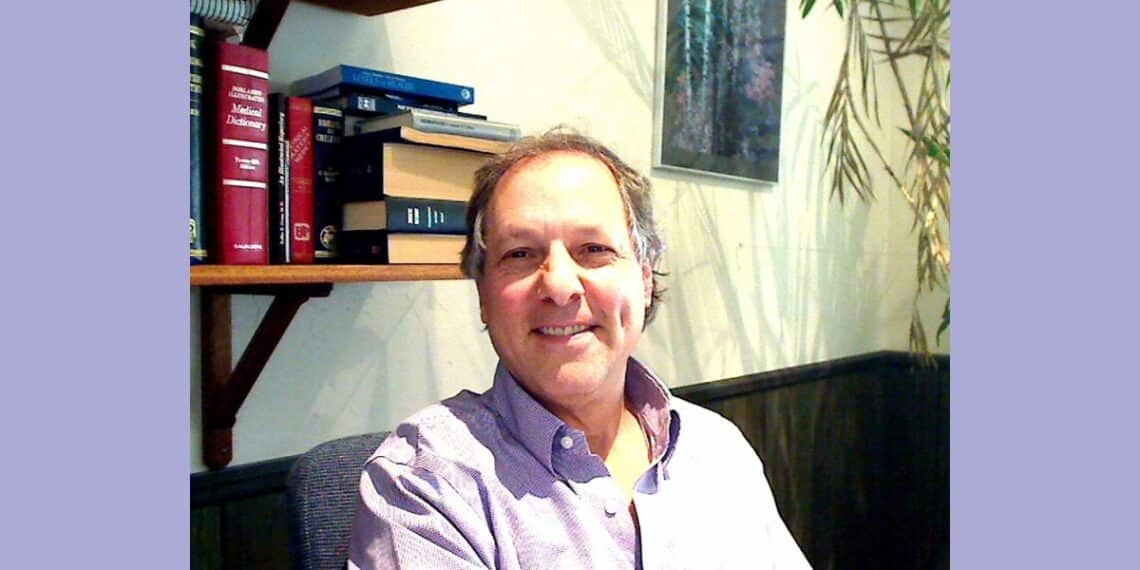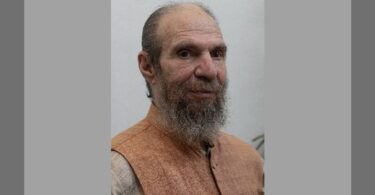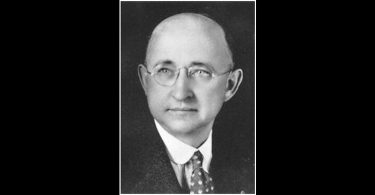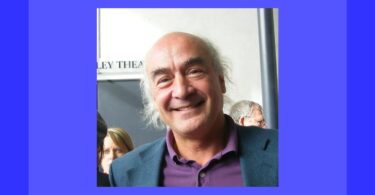Dr. Samuel Flagler and his wife Lila, also a homeopath, have been practicing in Tuscon Az for three decades.They are Naturopathic Family Physicians (NMD’s), nationally certified in Homeopathy, and Diplomates of the Homeopathic Academy of Naturopathic Physicians (DHANP), and Council for Homeopathic Certification (CHC). They both possess numerous skills and now use the cutting edge of homeopathy, including Sensation, to treat patients locally and also remotely with Skype.
AS: You both graduated from the National College of Naturopathic Medicine in Portland Oregon. 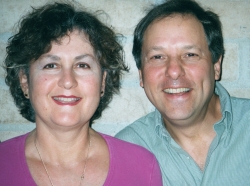
SF : It’s a bit of a story, our meeting and getting to NCNM, National College of Naturopathic Medicine. Lila and I were living in Taos NM in the mid ’70’s. I was working construction at the time and sustained a severe sprain to both my wrists, while collecting firewood in the back country. I was receiving unemployment benefits, as I was out of work for several months. With lots of time on my hands, (figuratively and literally), I began to get acquainted with herbs, diet and nutrition, all being totally new from my upbringing.
Lila had studied at a school of natural healing, and was doing meditative counseling and massage therapy. She had also studied acupuncture. From our initial meeting at a Reichian therapy introductory talk, we began dating. We never did the Reichian therapy.
While studying in a class in massage/manipulation someone handed me a catalogue to NCNM. Instantly I thought, “how cool, a Nature Doc”, that treats with herbs, nutrition, acupuncture and homeopathy, which I’d never heard of previously. Nor had I heard of Naturopathic Doctors either.
So within 2 months I had applied and been accepted to NCNM. I already had all the prerequisites, from undergraduate school, and 3 unsuccessful attempts to get into dental school.
Lila and I moved to Wichita, Kansas, where NCNM was teaching the 1st 2 years of basic sciences. The 2nd 2 years were being taught at the Portland, Oregon campus.
While I was starting naturopathic medical school, Lila was back in school getting her prerequisites finished to start NCNM. By my 3rd year the whole campus had moved to Portland, Oregon, so we didn’t have to split up as did some couples before us.
When I graduated in ’81, I began practicing while Lila finished her last 2 years. In ’83 we moved to Tucson Arizona, where we’ve been practicing ever since. So my passion for healing didn’t really begin until naturopathic school. And my first real exposure to Homeopathy was from Robin Murphy, a classmate a year ahead of me. I’d skip classes I didn’t like. And any chance I could, I’d sit in with Robin in the clinic watching him take homeopathic cases. It was fascinating to me how with these little sugar pills patients could experience such dramatic changes in their health and life.
When it got closer to graduation in my senior year, my advisors threatened to not graduate me as I was too focused on homeopathy, and not doing enough lab work and other naturopathic treatments. So for the last few months I had to demonstrate my skills in all areas while doing no homeopathy with patients in the clinic. That was really frustrating. I’d tell my junior clinicians to give a remedy as soon as I turned over the case to them.
As for Lila, her passion for healing started way before NCNM. While living in the Santa Barbara, California area, she went on an herb walk with the head of a school of natural healing in Taos, New Mexico. She then decided to study there, learning many healing modalities. She also became a massage therapist. After experiencing some of the profound effects of homeopathy on our cat, she decided to also become a naturopathic physician. The cat had abscesses all over its body and one at a time they would open up, with hair loss around it. The ulcers would then linger a long time. We gave homeopathic Silica and all the abscesses opened up and quickly resolved. So homeopathy became a passion for Lila as well, seeing it work in a profound and deep way.
AS: Thanks to Robin Murphy and the cat that you cured, you got to share a lifelong passion together. Did you have some challenging moments in those early years?
SF: The most challenging things were lack of patients to treat, and lack of experience in treating the ones we had. We gave lots of free library and health store lectures to get the word out, and to give ourselves some publicity. We didn’t have money to advertise, not that it ever did much good to advertise. So we put up flyers in all the stores. Fortunately there was little competition when we moved from Portland to Tucson in ’83, and none of the three Naturopaths were doing much Homeopathy. Then again, no one really knew what Homeopathy was back then either. Though now it seems to still be a well kept secret. More know about Homeopathy now, but most still do not know what it is, or what it’s capable of treating.
And then there was the experience. Our clinical training was quite rudimentary, and didn’t really prepare us for a lot of the pathology and case management cases we’d see in the first few years. Fortunately The IFH (International Foundation for Homeopathy) was giving seminars in the early 80’s with teachers like Bill Gray, Dean Crothers, and Carl Robinson, which helped in our further training.
The biggest support was when George Vithoulkas would come to the U.S. and give extensive courses, where we’d stay in Berkeley, California for 2-4 weeks, watching his video cases and live cases. His teachings were like “manna from heaven”, as our homeopathic souls were nourished and filled till the following intensive training.
Slowly but surely our confidence grew and we felt more capable of handling more difficult pathologies, while our success also slowly improved. We didn’t see a big change in our success rate till the late 90’s and early 2000 with the teachings of Rajan Sankaran.
AS: How did Sankaran’s teachings affect the way you practice? What aspects were most important?
SF: After Vithoulkas stopped coming regularly to the states in the late 80’s, we studied with Ananda Zaren for several years. She had been one of Vithoulkas’ strongest students from the US, and she’d follow him around Europe and wherever he was teaching. So studying with her was the next best thing to Vithoulkas, so we thought.
Throughout the 90’s our good friend and fellow classmate from Naturopathic Medical school, Jeff Baker, N.D., kept insisting we study with Sankaran.
We kept saying thanks, as we were happy with Ananda. It wasn’t until the early 2000’s that we took Jeff up on his persistence, and took a 2 year seminar in San Diego with Dr. Jayesh Shah, from Mumbai, and Rajan Sankaran’s closest friend and colleague. This training with Jayesh gave us the latest updated work that he, Dr. Sankaran, and their Mumbai colleagues were working on. From 2003 till this day, we have studied intensively with Rajan Sankaran, each year in a 5 day seminar in Vancouver, BC, Toronto, Ont., and NYC.
For a good part of the late 1990’s the use of the Delusions, Dreams, Fears and Anxiety sections of the repertory were greatly used interchangeably in trying to understand cases. Though by the year 2000, the concept of the Sensation Method,
(SM) had already begun to take shape. The plant families were the 1st to be understood. By using the Reference Works software program to do searches,
Dr. Sankaran and his Mumbai team were able to come up with a classification of sensations that were common to each of the major plant family groups. They published a Schema which was a short hand guidebook to study patients’ sensations and see how they fit into a particular plant family. An example might be the Solanaceae family, which Belladonna, Stramonium and Hyoscyamus are part of. We could see how they shared similar characteristic sensations such as suddenness, spasms, violence, terror, pursued, etc.
Another major contribution that came along with these concepts of the Sensations, was the idea of Miasms. Dr. Sankaran expanded, through observation and study of Materia Medica, the 3 core miasms from Hahnemann, to 10 miasms. This was a tremendously valuable tool to further help differentiate whether a patient may need Stramonium, which is in the Acute miasm, or Hyoscymas in the Typhoid miasm, if all the symptoms of the case matched both remedies. The pace and depth of intensity, of the patient’s experience of their state and core sensation, would illustrate which miasm they would be in.
The Mineral Kingdom was the next undertaking. With a lot of the groundwork done by Jan Scholten, a Dutch Homeopath, Dr. Sankaran and his team were able to categorize the Rows and Columns of the periodic table. We could then understand from where in the Periodic Table a patient would best need a remedy based on their guiding symptoms.
Needless to say, a great deal of work by many homeopaths has gone into understanding this SM that Dr. Sankaran is famous for, over the past 15 years.
It has given us another set of tools to better understand our patients and to increase our good results in prescribing.
Contrary to popular belief, we do not discard the repertory, provings and materia medica, and just base our prescription on a patients “so called sensations”.
We use both aspects, the left brained data side, as well as the right brained creative, intuitive side. We want to see that the remedy we come up fits both aspects.
Working with Rajan Sankaran has not only increased our results with patients.
It has been most rewarding to better understanding the true nature of the patient’s core illness and imbalance, and how to best bring about balance with the appropriate homeopathic remedy, in the correct potency. Along with all this, better case management skills have also been a big plus as well.
A rather long story to a simple question.
AS: That’s one of the most lucid summaries of Sankaran’s contribution that I’ve heard. Clearly Sankaran’s method helps reach the center of the case. Does it also introduce more possibilities for error in interpretation and categorization?
SF : Early on in the development of the sensation method, around 2002-2005 many practitioners felt they could solve all their cases by just finding what they thought was the patient’s core, or “vital sensation”. Many cases were cured, but many failures still persisted.
Many new students to homeopathy felt no need to study Materia Medica, Repertory, or Keynotes. And some schools were actually teaching just “Sensation Method”. Dr. Sankaran, in his travels teaching, saw how so many had gone astray and had left behind the fundamentals that Homeopathy had been built on. By 2008-2009 his seminars were more focused on teaching the integration of the “old with the new”.
His mission in teaching an 18 month webinar with weekly 2 hr lectures was to reunite the global community. He went to great lengths building the foundation of the course with the Organon, Repertory, Materia Medica, and teachings of the masters. As he introduced, after many sessions, the idea of “Vital Sensation”, Kingdoms, Miasms, and levels, it was always in the context of it all being “2 sides of the same coin. In each prescription he showed the need to have the rubrics and materia medica support the case, as much as eliciting the “Vital Sensation”. They had to complement, and confirm each other. In doing so, there is little room for speculation or interpretation. If the patient has been heard and understood, and if the symptoms have been well elicited, it should all point to the same remedy.
Dr. Sankaran will be releasing a new book, “the Integrated Approach to Case Taking” It is an excellent culmination of the latest 18 months webinar, the Toronto Summit that followed, and his latest ideas. It is a must read to more fully understand “the integration of the old with the new” that I referred to.
AS: I see, so Dr. Sankaran extended the dialogue, to make sure his students were well grounded. Speaking of dialogue, do you and Lila discuss cases with each other? Do you have different approaches or skills? How does that work out?
SF : We often discuss cases with each other. Mostly the unusual ones, and ones where the remedy acted dramatically. We often discuss ones we’re having challenges with, to get another perspective. We don’t have the time to discuss all cases, as we did early on in practice when there were fewer patients to follow. As Dr. Lila had studied Acupuncture before learning Homeopathy, it seemed natural for her to continue with it on certain patients. About 12 years ago she studied Japanese Acupuncture and traveled to Japan twice. She finds it gentler, and more effective than Chinese Acupuncture, and it doesn’t seem to interfere with Homeopathy either. My Acupuncture knowledge is limited, so we don’t have much discussion in that area.
AS: Do you have any special protocol for cases of Lymes, Parkinson’s or Autism?
SF: We’ve treated all of these over the years, but not enough to consider ourselves experts. In each case we always treat them the same, looking at the totality and not the diagnosis, and finding the best remedy for their state.
AS: Homeopathy is growing in the U.S. and last February Dr. Todd Rowe opened AMCH, the first homeopathy medical school since 1930. At the same time, there is more pushback from critics. How to you see this balance evolving over the next decade?
SF : It’s hard to predict what will happen. Though with the AMCH and good teaching programs in the US and abroad, Homeopathy has a better chance than it may have. It really comes down to practitioners continuing to get good results with patients. If patients are getting good treatment, there will always be a need for homeopaths. The politics of medicine has been around for the past 100 years, and Homeopathy has survived this long. We actually don’t focus on the issue that much. We are more focused on day to day practice and doing the best we can for our patients.
AS: Cancer is one of the more difficult diseases homeopaths deal with. Do you think anti-miasmatic remedies can prevent inherited tendencies from manifesting, for instance in a family which has generations of cancer?
SF: There are many different approaches to treating cancer with Homeopathy. Many of these methods are from Homeopaths outside of the USA. In this country it has been a delicate balance in treating cancer patients for legal reasons. Most Homeopaths in this country don’t see many cancer patients, as they tend to seek allopathic treatment as their first line of treatment.
In regard to inherited tendencies, or family history, and predispositions to developing cancer, we feel that giving the best constitutional remedy is the best approach. For those patients that have chosen to forgo allopathic treatment, we take their case as we would with any disease process in other patients. We then choose the remedy that best fits their state and their inner experience. In the few cancer cases we’ve seen, this approach has produced good results.
AS: Much of the research in homeopathy nowadays is defensive, aimed at proving homeopathy works. What kind of research do you think could advance homeopathy as a science?
SF: It is true that homeopathy, and the little research that funding allows, tends to be defensive, just to prove that remedies are more than just placebo. We’ve been involved in studies conducted by Iris Bell, MD. of the University of Arizona; patients were treated constitutionally with the appropriate remedy, and a control group received placebo. More studies of this nature would be useful, showing how treating the person as a whole produces results that are measurable, and substantiates the validity of Homeopathy in a clinical setting. The biggest problem is funding, and most Homeopaths are clinicians and not research oriented. So there needs to be a driving force, such as Dr Bell, that is able to bring the research into the clinic. She is constantly writing proposals for ongoing grant research funding.
AS: It’s very clear how dedicated you and Lila are, and how much you put into your work. Your patients are very fortunate! Thank you for sharing with us today.
Visit Samuel and Lila Flagler on their website : http://www.drflagler.com/

